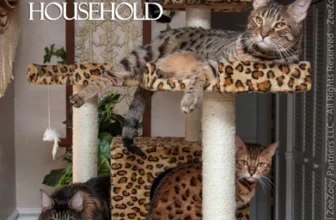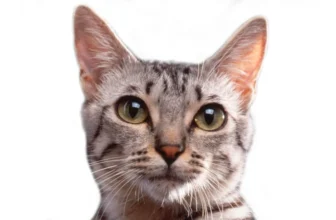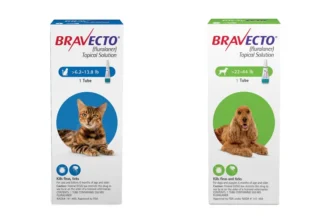It’s often said that cats are cool, calm, and collected – but what happens when your California Spangled cat is feeling stressed and anxious? As a pet owner, you may notice changes in your cat’s behavior, from hiding to excessive grooming. Fortunately, there are steps you can take to help alleviate your feline friend’s stress and anxiety. In this article, we’ll dive into the unique personality and traits of California Spangled cats, the common causes of their stress and anxiety, as well as practical ways to calm them down and behavioral techniques to reduce stress. Whether you’re a new cat owner or a seasoned pro, keep reading for some useful tips to keep your California Spangled cat happy and healthy.
Understanding the California Spangled Cat
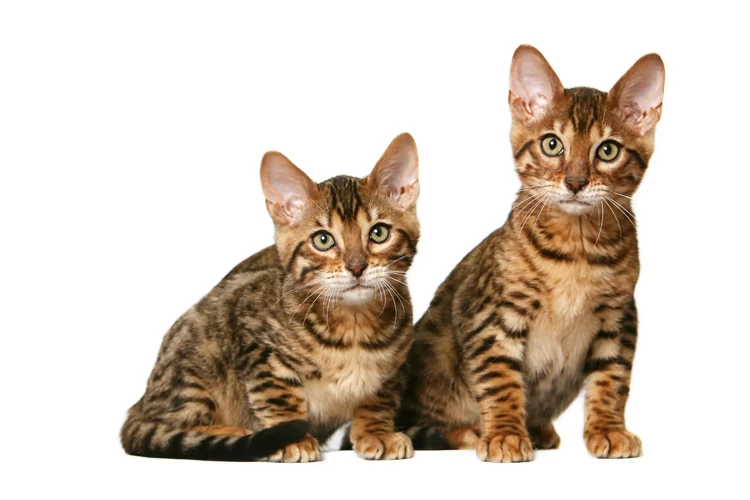
The California Spangled Cat is a unique and special breed known for its distinctive spots and wild appearance, resembling the leopard. Understanding the California Spangled Cat’s personality and behavior is crucial for providing proper care and attention to your furry friend. This breed is generally social and friendly with people and other pets, but like all cats, they can experience stress and anxiety. Knowing how to identify and manage these issues can help your cat live a happy and healthy life. To prevent other potential health issues, such as hairballs or dental problems, it’s important to give your California Spangled cat regular checkups with a veterinarian.
Personality and Traits
California Spangled Cats are an amazing breed with an interesting history. These cats were bred in the 1980s to look like wildcats, specifically the endangered leopard. They are known for their muscular build, athletic ability, and wild appearance. However, just like any other breed, California Spangled Cats have their unique personality traits that their owners should be aware of.
Here are some personality and traits of California Spangled Cats highlighted in the table:
| Personality and Traits of California Spangled Cats | |
|---|---|
| Active | California Spangled Cats are energetic and need physical activity to burn off their energy. They love to play and climb, so provide them with toys and perches to keep them entertained. |
| Intelligent | These cats are intelligent and curious. They need mental stimulation such as puzzles, treat-dispensing toys, and interactive games to stay mentally healthy and happy. |
| Independent | While being affectionate, California Spangled Cats are also independent cats who prefer to have their own space and time. They don’t like to be held for long periods and need a place where they can retreat to when they want alone time. |
| Vocal | California Spangled Cats are talkative cats and enjoy communicating with their owners through various vocalizations such as chirps, meows, and purrs. |
| Friendly | These cats are friendly and outgoing towards their humans and other animals in the household when they are properly socialized. They love being around their family members and getting attention from them. |
It is crucial to understand your California Spangled Cat’s personality and traits to provide them the necessary care and attention they need. Knowing their traits helps build a strong bond between you and your cat, resulting in a healthy and happy relationship. To keep your cat healthy, don’t forget to check out some other relevant articles, such as maintaining their healthy teeth, treating hairballs, treating allergies, and many more.
Common Causes of Stress and Anxiety
Stress and anxiety in California Spangled cats may have various causes. Identifying the underlying reasons can help alleviate the symptoms. Here are some common causes of stress and anxiety in California Spangled cats:
| Cause | Description |
|---|---|
| Environmental changes | Any changes within the cat’s environment, such as moving to a new home or rearranging furniture, may trigger stress and anxiety. |
| Health issues | Cats may also experience stress and anxiety due to underlying health issues, such as hairballs, dental problems (read more about how to keep your cat’s teeth healthy), urinary tract infections, obesity, allergies (read more about California Spangled cats and allergies), skin conditions (read more about common skin conditions), or even kidney disease (read more about kidney disease in cats). |
| Lack of stimulation | California Spangled cats are intelligent, active, and curious animals. Without proper stimulation, they may experience stress or boredom. |
| Separation anxiety | Cats, like humans, can experience separation anxiety. It is important to provide your cat with enough attention and socialization to prevent anxiety in their absence. |
| Other pets | Living with other pets or animals can cause stress and anxiety. Cats may also feel threatened or scared by the presence of unfamiliar animals. |
| Loud noises | California Spangled cats may become anxious when exposed to loud noises such as thunder, fireworks, or construction sounds. |
Identifying the underlying cause of your cat’s stress and anxiety can help you develop an effective strategy to alleviate their symptoms.
Signs and Symptoms of Stress and Anxiety in California Spangled Cats
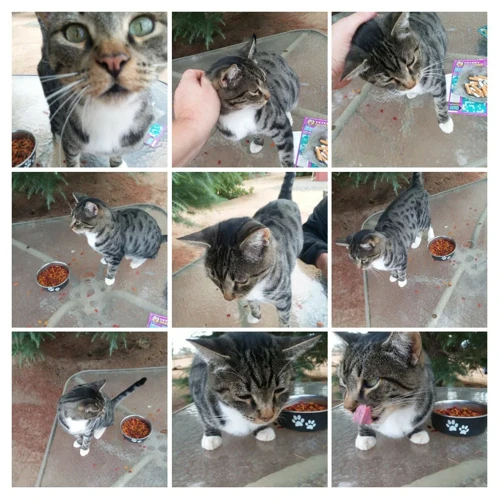
Cats, including California Spangled Cats, are skilled at hiding their stress and anxiety. However, there are some observable signs and symptoms that can alert you when your feline friend is struggling with stress. One of the first signs of anxiety in cats is a change in their behavior. They may become more nervous and skittish about routine activities or refuse to engage in activities that they previously enjoyed. Some cats may start exhibiting destructive or aggressive behavior, such as scratching furniture or biting.
Another physical sign of anxiety in California Spangled Cats is gastrointestinal distress. Your pet may experience frequent vomiting, diarrhea, or constipation. Skin irritation, such as excessive licking or grooming, can also be a sign of stress. Chronic stress can also lead to a weakened immune system, which can cause your cat to become more susceptible to illnesses.
Changes in eating habits and sleeping patterns can also indicate stress and anxiety in cats. Some may eat less or more than usual, and their sleeping routine may be disturbed. California Spangled Cats under stress may also seek attention more or less, depending on their personalities and defensive strategies.
You may also observe that your cat’s pupils are dilated or their body is tensed, which are other signs of stress or anxiety. They may also start vocalizing more than usual, including howling, meowing, or growling.
It’s important to note that these signs and symptoms can also indicate underlying health problems, so it’s essential to monitor your cat’s behavior closely and schedule regular checkups with a veterinarian. By understanding what causes stress and anxiety in California Spangled Cats and how to recognize the signs, you can take steps to help your pet stay healthy and happy.
Ways to Calm Your California Spangled Cat
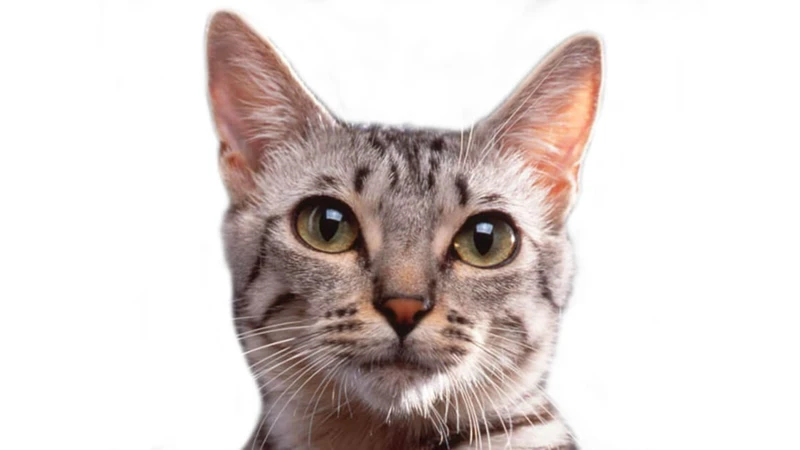
As cat owners, we know how important it is to keep our feline companions happy and relaxed. When it comes to California Spangled cats, it’s important to remember that they can be more susceptible to stress and anxiety due to their sensitive nature. That’s why it’s crucial to know some effective ways to calm your furry friend and make sure they feel comfortable in their environment. Here are some helpful tips and tricks that will help reduce stress and anxiety in your California Spangled cat.
Create a Safe Space
Creating a Safe Space for Your California Spangled Cat
One of the most effective ways to help relieve stress and anxiety in your California Spangled cat is to create a safe space for them. Here are some steps you can take to create a safe space for your feline friend:
- Choose a quiet and secluded area: Pick a spot in your home that is away from any loud noises or distractions, where your cat can peacefully retreat and relax.
- Provide a comfortable bed: Make sure your cat has a comfortable bed or mat to lie on. A bed with raised edges can provide added comfort and security.
- Include familiar items: Include items that your cat is familiar with, such as their favorite blanket or toy. This will help them feel more at ease.
- Use pheromone sprays: You can use pheromone sprays or diffusers in the safe space to help your cat feel more relaxed and calm. Pheromones mimic the natural scents that cats use to communicate with each other.
Remember that every cat is different and may require different accommodations in their safe space. Some cats may prefer a dark and enclosed area, while others may prefer a bright and open space. Observe your cat’s behavior and preferences to determine what works best for them.
Creating a safe space for your California Spangled cat can be an important step in reducing their stress and anxiety. Along with mental stimulation, routine, and other techniques, creating a safe space can help keep your furry friend feeling safe and secure in their environment.
Provide Mental Stimulation
Cats, especially California Spangled Cats, require mental stimulation. Here are some ways to provide your feline friend with mental stimulation to alleviate stress and anxiety:
- Interactive Toys: Interactive toys are an excellent way to keep your California Spangled Cat mentally stimulated. Toys like puzzle feeders and laser pointers encourage playtime and keep them entertained for hours.
- Scratching Posts: Scratching posts provide a source of entertainment and help your cat stretch its muscles. Consider investing in a scratching post with several levels and a variety of textures to keep your cat engaged.
- Window Perches: San Francisco’s California Spangled Cats love to observe their surroundings. A window perch will provide a comfortable spot for them to relax and monitor their environment.
- Visual and Audio Stimulation: Cats enjoy watching animal documentaries or bird videos. Playing music to relax or even sounds of nature like birds chirping can be beneficial to their mental health.
Providing your California Spangled Cat with mental stimulation is essential for keeping them healthy and happy. Not only will it prevent them from feeling bored or sad, but it will also help keep them active and engaged. So, it’s worth investing time and money into providing plentiful ways for your cat to stay entertained and healthy.
Establish a Routine
One effective way to relieve stress and anxiety in your California Spangled Cat is to establish a regular routine. Cats are creatures of habit and thrive on consistency, so creating a predictable schedule can help them feel secure and relaxed.
Here are some tips for establishing a routine:
- Set a regular time for feeding, playtime, and cuddles. Try to stick to the same schedule every day, even on weekends or holidays.
- Create a designated space for feeding and provide fresh water at all times.
- Keep the litter box in a quiet, accessible location and scoop it daily.
- Provide a cozy bed or napping spot in a quiet area of the house.
- Keep toys and scratching posts in various locations to encourage exercise and play.
When cats know what to expect, they are less likely to feel stressed or anxious. By establishing a routine and sticking to it, you can help your California Spangled Cat feel more secure and relaxed in their environment.
Use Soothing Scents and Music
One of the best ways to calm your California Spangled cat when they are feeling anxious or stressed is by using soothing scents and music. Cats have a keen sense of smell and hearing, which can be utilized to create a calming environment for them. Here are some tips on using soothing scents and music for your feline friend:
- Scents: There are certain scents that have a calming effect on cats, such as lavender, chamomile, and valerian. You can use essential oils or aromatherapy diffusers to spread these scents throughout your home. Be sure to dilute essential oils properly and never apply them directly to your cat’s skin. You can also use natural plug-in diffusers, which release slow and steady sprays of calming scents throughout the day.
- Music: Studies have shown that classical music has a soothing effect on animals, including cats. You can create a playlist of classical music or relaxation music specifically for your cat. Play the music softly in the background when your cat is feeling anxious or stressed. This will not only help them relax, but it will also drown out any loud or sudden noises that may be causing them stress.
- Combination: You can also combine the use of scents and music for an even more effective calming effect. Use lavender or chamomile scents while playing classical music in the background. This will create a relaxing atmosphere for your cat, and they will associate these scents and sounds with a sense of calm and security.
It is important to remember that every cat is different. Some cats may not respond to scents or music, while others may find them extremely comforting. It is important to observe your cat’s behavior and adjust your methods accordingly. Always consult with your veterinarian before introducing new scents or music to your cat’s environment to ensure their safety and well-being.
Try Therapeutic Massage
Therapeutic massage is an excellent way to calm your California Spangled cat and help ease their stress and anxiety. Massaging your cat can help improve blood flow and decrease muscle tension, which in turn can help reduce stress hormones like cortisol. To get started, you’ll want to start by creating a calm and comfortable environment for your cat.
Here are a few steps you can take to massage your California Spangled cat:
| Step 1: | Create a calm environment by choosing a quiet room with dim lighting. |
| Step 2: | Gently stroke your cat from their head to their tail to help them relax. |
| Step 3: | Use gentle pressure to massage your cat’s muscles in a circular motion, starting at their shoulders and moving down their back. |
| Step 4: | Take your time, and be sure to pay attention to how your cat is responding to the massage. If they seem uncomfortable or are showing signs of distress, stop the massage and try again another time. |
Remember: massage should be a relaxing and enjoyable experience for your California Spangled cat. If your cat seems stressed or uncomfortable, it’s important to stop the massage and try a different technique for stress relief.
Give Natural Supplements
Natural supplements are an excellent way to reduce stress and anxiety in California Spangled cats, without subjecting them to harsh chemicals or strong medications. Here are some various natural supplements that you can give your cat to help calm them down:
- Chamomile: Chamomile is a natural sedative that can help reduce anxiety in cats. You can give your cat some chamomile tea, or you can add chamomile supplements to their water.
- Valerian Root: Valerian root has been shown to help reduce anxiety in cats, and it also has a calming effect. You can add valerian root supplements to your cat’s food or give them valerian root treats.
- Lavender: Lavender has a calming effect on cats. You can add a drop of lavender essential oil to your cat’s bed or spray some lavender essential oil diluted in water around the room where your cat spends the most time.
- Hops: Hops can help your cat relax and reduce their anxiety. You can add hops to your cat’s food or give them hops treats.
- CBD Oil: CBD oil is a natural supplement that can help reduce anxiety and pain in cats. You can add CBD oil to your cat’s food or give them CBD oil treats.
It is essential to note that any natural supplements given to your cat should be done so under the guidance of a veterinarian. Some supplements may interact with medications or have potential side effects, so it is essential to ensure that your cat’s health is not compromised. Additionally, dosage and frequency should be carefully monitored to ensure that your cat does not experience any adverse effects.
Behavioral Techniques to Reduce Stress and Anxiety in California Spangled Cats
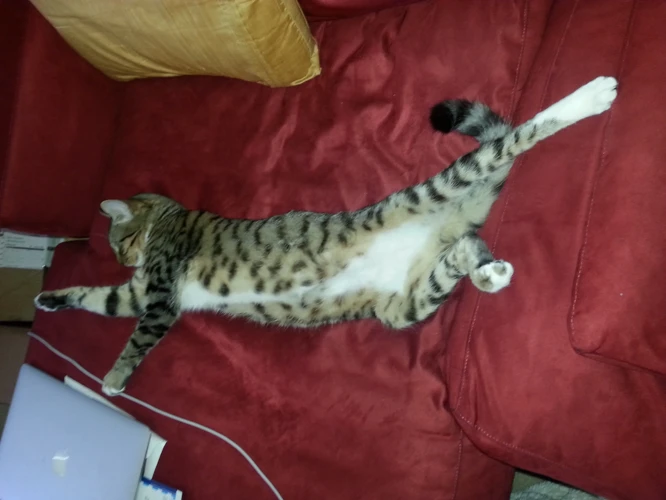
Now that you have created a calm and stimulating environment for your California Spangled cat, it’s time to focus on some behavioral techniques that will further help to reduce their stress and anxiety. In this section, we will explore different strategies that you can use to positively reinforce good behavior, redirect negative behavior, and avoid punishing your feline companion. By incorporating these techniques into your daily routine, you can create a harmonious and peaceful relationship with your cat and help them feel safe and relaxed at all times. Let’s dive in!
Positive Reinforcement
Positive reinforcement is one of the most effective ways to reduce stress and anxiety in California Spangled cats. This technique involves rewarding desirable behavior rather than punishing undesirable behavior. Here are some ways to use positive reinforcement to help calm your cat:
- Offer treats: When your cat displays calm and relaxed behavior, such as lying down, reward them with a small treat. This will help your cat associate relaxation with positive outcomes.
- Praise: Positive reinforcement can also involve verbal praise. When your cat is behaving well, use encouraging words to let them know they’re doing a good job.
- Training: You can use positive reinforcement to teach your cat new behaviors that will help them cope with stress and anxiety. For example, you can train your cat to come to you when you call their name, which will give them a sense of security.
Remember, positive reinforcement works best when it’s consistent and immediate. Try to reward your cat as soon as they display the desirable behavior. With patience and persistence, you can use positive reinforcement to help your California Spangled cat feel more relaxed and secure in their environment.
Redirect Negative Behavior
Redirecting negative behavior is one of the most effective techniques for reducing stress and anxiety in California Spangled Cats. This technique involves recognizing and acknowledging negative behaviors and then redirecting the cat’s focus to a positive behavior that will have a more desirable outcome.
One way to redirect negative behavior is by providing your cat with toys and activities that they enjoy. This can help to occupy their time and energy, and distract them from destructive behaviors. Some examples of toys that can help redirect negative behavior include interactive puzzles, balls, and scratching posts.
Another way to redirect negative behavior is by creating a positive association with a particular behavior. For example, if your cat is scratching your furniture, you can redirect this behavior by providing them with a scratching post and rewarding them with treats and positive reinforcement when they use it.
It’s important to note that punishing your cat for negative behavior is not an effective way to redirect their behavior. Punishing your cat can actually increase their stress and anxiety levels and lead to more negative behaviors. Instead, focus on positive reinforcement and redirecting their behavior.
Here is a table summarizing ways to redirect negative behavior in California Spangled Cats:
| Technique | Explanation |
|---|---|
| Provide toys and activities | Try to distract your cat from negative behaviors by providing toys and activities that they enjoy, such as interactive puzzles and scratching posts. |
| Create positive associations | If your cat is engaging in negative behaviors like scratching furniture, redirect their behavior by providing them with a scratching post and rewarding them when they use it. |
| Avoid punishment | Avoid punishing your cat for negative behaviors as this can lead to increased stress and anxiety levels and more negative behaviors. |
By redirecting negative behavior, you can help your California Spangled Cat to feel more comfortable and reduce their stress and anxiety levels. Remember to be patient and consistent when using this technique, and always provide positive reinforcement for good behavior.
Avoid Punishment
A common mistake cat owners make when attempting to alter their feline companion’s behavior is to use punishment. However, punishment is not effective and can actually increase stress and anxiety in cats. It is important to avoid punishment and opt for positive reinforcement techniques instead.
Why Punishment Doesn’t Work
Using punishment such as yelling, hitting, or spraying water on a cat can cause them to become scared and anxious around their owner, making the behavior worse. It can also lead to physical or emotional harm to the cat, and damage the bond between the owner and the cat. Cats do not understand punishment the same way humans do, making it ineffective for changing behavior.
Positive Reinforcement Techniques
Positive reinforcement involves rewarding desirable behavior to encourage it to be repeated. Using treats, toys, or affection can help a cat associate good behavior with positive experiences. For example, if a cat scratches the appropriate scratching post instead of the couch, reward it with a treat or praise.
Redirecting Behavior
If a cat is engaging in undesirable behavior, it is important to redirect their attention to something appropriate rather than punishing the behavior. For example, if a cat is scratching the couch, gently move them to a nearby scratching post or offer an enticing toy for them to play with instead.
Creating a Stimulating Environment
Cats often engage in destructive or undesirable behavior due to boredom or lack of mental stimulation. By providing a stimulating environment with plenty of toys and opportunities for play, a cat is less likely to engage in negative behavior. Puzzle feeders, cat trees, and interactive toys are all great options for keeping a California Spangled cat stimulated and engaged.
Conclusion
Positive reinforcement, redirecting behavior, and creating a stimulating environment are all effective techniques for reducing stress and anxiety in cats. It is important to avoid punishment, as it can do more harm than good. By using positive reinforcement and creating a positive environment, owners can help their California Spangled cat feel safe, happy, and calm.
| Do | Avoid |
|---|---|
| Use positive reinforcement techniques | Using physical punishment or yelling |
| Redirect negative behavior | Ignoring the negative behavior or letting it continue |
| Create a stimulating environment with plenty of toys and play opportunities | Leaving a cat in a boring environment with no mental stimulation |
When to Seek Professional Help
It is important to know when seeking professional help is necessary for your California Spangled Cat’s stress and anxiety. While many techniques can be effective at reducing stress and anxiety, some situations may require the help of a veterinarian or an animal behaviorist.
Excessive and Continual Stress
If your California Spangled Cat is displaying signs of excessive and continual stress, such as excessive grooming, refusing to eat or drink, or changes in urination and defecation habits, it may be time to seek professional help. These symptoms may indicate an underlying medical issue, and a veterinarian will be able to perform a thorough exam to address any potential health concerns.
Aggressive Behavior
If your California Spangled Cat is displaying aggressive behavior towards you or other pets, seeking professional help is crucial. Aggression can pose a danger to both yourself and your pet, and a behaviorist can help identify the root cause of the aggression and develop a personalized treatment plan.
Failure of Behavioral Techniques
If you have tried various behavioral techniques without success, it may be time to seek professional help. A behaviorist can help you identify any potential underlying issues and work with you to develop a more effective approach to reducing your cat’s stress and anxiety.
Conclusion
While many techniques can be effective at reducing stress and anxiety in California Spangled Cats, it is important to recognize when seeking professional help is necessary. If your cat is displaying excessive and continual stress, aggressive behavior, or if previous techniques have been unsuccessful, it is crucial to seek the help of a veterinarian or animal behaviorist for the wellbeing of both you and your furry friend.
Conclusion
In conclusion, taking care of a California Spangled Cat’s stress and anxiety is crucial for their overall well-being. It is important to understand the personality and traits of these cats, as well as common causes of stress and anxiety, in order to identify any possible signs and symptoms. Creating a safe space for them, providing mental stimulation, establishing a routine, using soothing scents and music, trying therapeutic massage, and giving natural supplements are all effective ways to calm your furry friend.
Furthermore, behavioral techniques such as positive reinforcement, redirecting negative behavior, and avoiding punishment can also be implemented to reduce stress and anxiety. However, if the situation seems too severe and cannot be handled with lifestyle changes or behavioral techniques alone, seeking professional help from a veterinarian or animal behaviorist is highly recommended.
Remember, as a loving and responsible pet owner, it is your duty to ensure that your California Spangled Cat is free from stress and anxiety. By employing these methods and techniques, you can help your furry friend live a healthier and happier life.
Frequently Asked Questions
1. Can California Spangled Cats develop anxiety?
Yes, California Spangled Cats can develop anxiety. Like any other cat breed, they are susceptible to experiencing stressors that may lead to anxiety or other behavioral issues.
2. How can I tell if my California Spangled Cat is stressed or anxious?
Some common signs of stress and anxiety in California Spangled Cats include excessive grooming, loss of appetite, changes in behavior, urine marking, and increased vocalization.
3. What can cause stress and anxiety in California Spangled Cats?
Common causes of stress and anxiety in California Spangled Cats include changes in their environment, loud noises, lack of socialization, and health issues.
4. Are there any natural supplements that can help calm my California Spangled Cat?
Yes, there are some natural supplements, such as valerian root or chamomile, that can help calm your California Spangled Cat. However, it’s important to consult with your veterinarian first to ensure that these supplements are safe for your cat.
5. Can establishing a routine help reduce my California Spangled Cat’s stress and anxiety?
Yes, establishing a routine can help reduce stress and anxiety in California Spangled Cats. This will give them a sense of security and predictability in their daily lives.
6. Should I punish my California Spangled Cat for displaying anxious or stressed behavior?
No, you should never punish your California Spangled Cat for displaying anxious or stressed behavior. Punishment will only increase their anxiety and may cause more behavioral issues.
7. Can therapeutic massage help calm my California Spangled Cat?
Yes, therapeutic massage can help calm your California Spangled Cat. This technique can reduce tension and promote relaxation in your cat.
8. When should I seek professional help for my California Spangled Cat’s stress and anxiety?
If your California Spangled Cat’s stress and anxiety persist despite your efforts to relieve them, it may be time to seek professional help. This could include consulting with a veterinarian or a certified animal behaviorist.
9. What is positive reinforcement, and how can it help reduce stress and anxiety in California Spangled Cats?
Positive reinforcement involves rewarding your California Spangled Cat for displaying positive behavior. This technique can help reduce stress and anxiety by encouraging your cat to repeat the positive behavior.
10. Can providing mental stimulation help reduce stress and anxiety in California Spangled Cats?
Yes, providing mental stimulation can help reduce stress and anxiety in California Spangled Cats. This includes providing toys, puzzles, and other activities to keep your cat mentally engaged and occupied.





